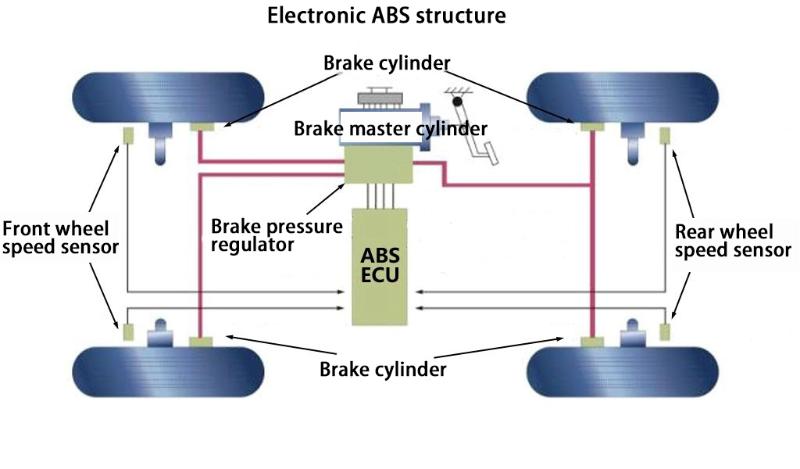

This anti-lock braking system setup contains a speed sensor on all four-wheel and a separate valve for each of the front wheels. This setup allows the controller to monitor each wheel individually, ensuring the maximum braking force is achieved.

These types of ABS contain a speed sensor on the four wheels and a separate valve for all four wheels. The controller will limit the brake force (EBD) and then activate the ABS modulator which actuates the braking valves on and off. A signal is sent to the controller if the wheel loses traction. The controller serves as an ECU device as it receives information from each wheel speed sensor. A clogged valve is a common problem that occurs in the anti-lock braking system. In the third position, the valve releases some pressure from the brake. If this happens, the pressure is prevented from rising further. In position two, the valve blocks the line, separating the brake from the master cylinder. in position one, the valve opens allowing pressure from the master cylinder to pass right through to the brake. It’s controlled by ABS itself and usually has three positions on some systems. The anti-lock brake system contains a valve as its component. This cause in cause inaccurate readings to the controller. The sensor becomes inaccurate at slow speeds because the slower rotation of the wheel can cause incorrect fluctuations in the magnetic field. The component work with a magnet and a hall effect sensor, or a toothed wheel and an electromagnetic coil to produce a signal.Īs the wheel rotates, it induces a magnetic field around the sensor, which generates a voltage in the sensor as the magnetic field fluctuates around it. Read: Understanding automotive braking system Components of anti-lock braking systemīelow are the components of an anti-lock braking system and their functions:Ī speed sensor is also known as an encoder as it helps to determine the acceleration or deceleration of the wheel. This is when it increases the pressure until its deceleration occurs. This means when a rapid deceleration happens the wheel is about to slip, so it reduces the pressure to take that brake until it experiences an acceleration.

The ABS controller is a program to know the rapid deceleration of a car is impossible.
#Purpose of anti lock braking system driver
The pulsing indicates to the driver that the ABS is working.
#Purpose of anti lock braking system drivers
Drivers will experience pulsing in the brake pedal when the system is in operation due to the opening and closing of the valves.This allows for efficient steering in most emergency braking conditions. This eliminates the need to manually pump the brakes while driving on a low traction surface or a slippery surface.If the checking never occurs, the wheel stops much quicker than it could. This occurs right before the wheel locks up, making a rapid deceleration. It checks for decelerations in the wheel that are out of the ordinary. It features a controller that monitors the speed sensors at all times.The primary purpose of an anti-lock brake system is to have better control of the vehicles, even while driving in obstacles.The followings are the functions of the anti-lock braking system in automotive engines: Read: Understanding Hydraulic Braking System Functions of the anti-lock braking system: This feature is depending on its specific capabilities and implementation, which is known variously as electronic brakeforce distribution, traction control system, emergency brake assist, or electronic stability control (ESC). The modern version of the ABS does not only prevent wheel lock under braking but also alters the front-wheel-brake bias. It also increases braking distance on loose gravel or snow-covered surfaces. The system generally improved vehicle control and also decreases stopping distances on dry and slippery surfaces. The ABS works at a much faster rate and more effective than driver’s control. these braking methods are once practiced by skillful drivers before ABS became popular. The ABS work with an automated principle of threshold braking and cadence braking.

Anti-lock braking also maintains tractive contact with the road surface. The system allows the driver or rider to have control over the vehicle as the wheels are prevented from locking up during braking. This may result in an accident.Īdditionally, an anti-lock brake system (ABS) is known to be a safety anti-skid braking system used on aircraft and vehicles such as cars, motorcycles, buses, and trucks. But in situations like this, the vehicle’s wheels continue to be in motion, and the loss of grip may cause the driver or rider to lose control over the steering of the vehicle. This causes the tires to skid, resulting in an uncontrollable vehicle. The ABS comes to the rescue when there is a loss of traction between the tires and the road surface.


 0 kommentar(er)
0 kommentar(er)
